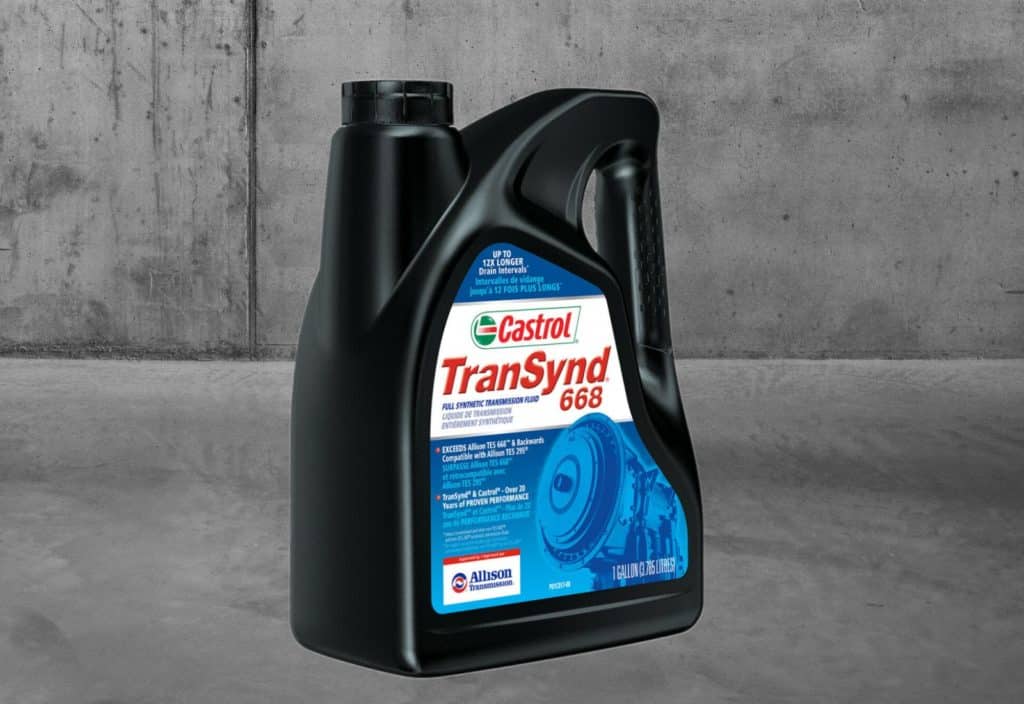
Although the transmissions manufactured by Allison are quite durable, you may run into a few issues sometimes. Many users have complained about the hard shifting problem while using these transmissions.
When this problem occurs, it gets stuck, and you won’t be able to shift gears easily. Allison transmissions work smoothly most of the time, so there is definitely something wrong when you experience hard shifting.
No doubt, a transmission plays a key role in the proper functioning of your motorhome. So, it is important to fix this problem in time to avoid any headaches later.
In this article, we intend to discuss some of the reasons for the hard shifting problem in the Allison transmissions, along with their simple solutions.
Allison Transmission Hard Shifting Problems
Is your Allison transmission not shifting properly? Here are a few potential fixes!
1. Transmission Fluid
The hard shifting problem is often linked with low transmission fluid levels. Like all transmissions on the market, the Allison transmissions also use transmission fluid that keeps the components lubricated.
In addition to that, it also minimizes friction between the moving components of the transmission system.
Since the transmission fluid lubricates the clutch and gears, they will likely get stuck when there is not enough fuel in the system. Apart from this problem, low transmission fluid can also lead to transmission overheating.
This is why it is important to have sufficient fluid in the reservoir at all times.
Checking the Transmission Fluid
If you have been facing the hard shifting problem lately, consider checking the transmission fluid level in the reservoir.
A dipstick is usually used for this purpose. It is kept in an easy-to-access place in the RV, usually in the dipstick tube in the engine compartment.
However, its location may vary depending on the model of your RV. Therefore, it would be a good idea to refer to the operator manual to know about the model-specific information if you cannot find the dipstick. It is colored red and labeled to help you identify it.
Warm up the Engine
It is recommended to warm up the engine a bit before checking the transmission fluid level. You can also keep the engine running when checking it. And yes, make sure that your motorhome is parked on level ground. This will give you accurate readings.
First, take the dipstick out of the dipstick tube and wipe off the old fluid using a cloth. Then, dip it in the reservoir and pull it out after a few seconds.
Most dipsticks nowadays have the minimum and maximum marks on them to help you determine the fluid level. Ideally, the fluid level should be somewhere between these marks.
Consequences of Overfilling
The dipstick has marks for a reason. Keep in mind that overfilling the reservoir can also damage your transmission system and cause the same problem. Furthermore, it is seen that the transmission fluid loses its lubricative properties when overfilled.
In severe cases, it can even blow up the entire system by creating high pressure inside the transmission. So, be careful and add just the right amount of transmission fluid to the reservoir.
Once you have added it, make sure to check the level with the dipstick.
Condition of the Transmission Fluid
Apart from the level, you will also need to check the condition of the transmission fluid. For this purpose, dip the dipstick in the transmission fluid reservoir and place it on a white cloth.
Now, check the color of the fluid. If the fluid color is on the pink side, it means that the fluid is good to use. On the other hand, if it looks dark, it must be replaced.
This is because impurities, such as dust particles, contaminate the transmission fluid over time and degrade its quality. When its quality degrades, it won’t lubricate the components and lead to the hard shifting problem.
Besides, the impurities can also cause serious damage to the transmission system. So, if the transmission fluid has turned dark brown, consider flushing it out and adding fresh fluid.
Draining Out the Fluid
Before draining the worn-out transmission fluid, make sure to place a receptacle under the reservoir. Most companies recommend changing the transmission fluid every 30,000 miles.
However, if you drive on muddy terrains, you may need to replace it more frequently. It would be better to read the user manual and follow the maintenance schedule mentioned in it.
Leaky Reservoir
If you feel that your vehicle is consuming too much transmission fluid, make sure that the reservoir is not leaky. Refill the reservoir and check its level every day. If your system has poor fluid efficiency, consider reaching out to a trained mechanic.
However, if you see dark spots on the surface where your motorhome is parked, you could well be dealing with a leaky transmission fluid reservoir. Get it replaced immediately to prevent the fluid from leaking.
2. Wrong Fluid
Most beginners make the common mistake of adding the wrong fluid to the reservoir. In such cases, the Allison transmission starts showing a few problems, and the hard shifting problem is one of them.
Remember that the transmission fluid comes in different types. So, If you do not know which fluid is suitable for your transmission system, consider going through the operator manual.
If you have been using the wrong fluid, drain it out and refill it with the fluid recommended by the manufacturer.
3. Low Temperature
If the climate of your area is cold, the transmission may not warm up and function properly. The transmission fluid also tends to get thicker during winters and may not be able to lubricate the components, resulting in this problem.
Sadly, there is nothing you can do about it. Your transmission system will be back to its optimal performance when it reaches its normal working temperature. Moreover, consider investing in a quality transmission fluid that can maintain its properties during winter.
4. Damaged Transmission
If you have not been able to identify the reason, it would be best to visit a mechanic. Transmission is one of the most expensive components, and attempting to repair it on your own can damage it even more.
Furthermore, since it is a complex piece of machinery, repairing it requires skills and tools. A mechanic will examine it thoroughly and identify the cause.
The Bottom Line
Many users have faced the hard shifting problem while using Allison transmissions. There could be many reasons for this problem that we have mentioned in this article. It is often associated with insufficient transmission fluid
So, check the level and make sure that the fluid is healthy. If the reservoir is leaky, consider getting it replaced.



